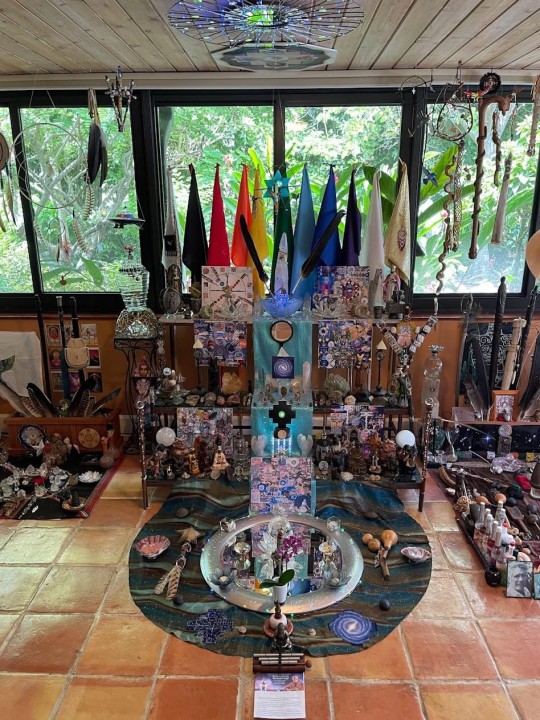
A Personal Musing on the Ancestral Andean Mystical Tradition Notion of Taripaypacha
In service to your shamanic beauty walk as shining ones... munaymanta, don Oscar
.
The ancestral Andean mystical traditions encompass a rich tapestry of beliefs and practices that have persisted for millennia. Central to these traditions is the concept of Pachakuti, a period of upheaval and transformation, followed by the Taripaypacha, an era of re-encounter and renewal. This brief essay delves into the core understanding of the Taripaypacha within Andean cosmology, exploring its significance, characteristics, and the cultural and spiritual rebirth it heralds. Based on examining post-Conquest historical texts, numerous autochthonous Andean oral traditions, and contemporary hermeneutic understanding, I aim to elucidate the profound gnostic impact of the Taripaypacha on Andean communities and its enduring relevance in the modern world.
The Andes, home to ancient civilizations such as the Chavin, Tiwanaku, Sechin, Caral, Paracas, Nasca, Moche, Lambayeque, Chimu, Chachapoyas, Chancay Wari, and Inka, are steeped in a mystical tradition that intertwines the material and spiritual realms. Central to this tradition is the cyclical concept of time, embodied in the notion of Pachakuti—a cataclysmic event or period that overturns the established order, leading to profound transformation. Following each Pachakuti is the Taripaypacha, or the Era of Re-encounter, a time of renewal and reconnection with ancestral wisdom and spiritual truths.
Historical Context and Origins of Pachakuti:
To attain proper gnosis of the Taripaypacha as a cyclically predictable socio-cultural planetary occurrence, we must first explore its origins, nuanced onomatopoeic meanings, and heuristic philosophical implications within the broader framework of Andean cosmology.
Firstly, the term "Pachakuti" derives from the Quechua words "Pacha" (world, time, space, place...in essence, realm of consciousness) and "Kuti" (return, upheaval, or transformational change). Together, they signify a turning point or a reversal of the existing world order. Pachakuti is not merely a historical event but a metaphysical process that means the end or completion of an era and the emergence or beginning of another. Historically, most pre-Columbian Andean civilizations experienced such dramatic eco-cultural transformations, notably well documented under the rule of Pachacuti Inka Yupanqui, the 9th Sapa Inka, who led significant territorial expansions and socio-ideological reforms in the 15th century.
Each moment of Pachakuti is associated with and experienced as a period of destruction and chaos necessary for the subsequent rebirth of human reverence and peacefully regenerative coexistence with our living earth. It is a cleansing process that paves the way for new growth and the restoration of cosmic harmony among All Relations. The cyclical nature of time in Andean consciousness contrasts with the linear progression of Western historiography, emphasizing renewal and continuity rather than merely material pursuits, self-serving consumption, and personal ownership.
The Essence of Taripaypacha:
The Taripaypacha, or Era of Re-Encounter, follows each Pachakuti and represents a period of spiritual renaissance and reconnection with spiritual truth and ancestral wisdom ways. "Taripay" literally translates to "to find" or "to encounter," and "Pacha" again signifies earth, time, space, world, place, realm of consciousness...essentially, a shared experience of Being. Thus, Taripaypacha can be understood as the temporal interlude when humanity rediscovers its spiritual roots and chooses to align with inviolate behavioral cosmic principles.
Spiritual Significance
The Taripaypacha is a time of heightened earth-honoring vision, spiritual awareness, and species-wide communal harmony. During this era, individuals and communities reverently connect with their mythic and genealogical ancestors, mother nature, and our cosmic pleroma. This period is characterized by a resurgence of traditional healing rituals, ceremonial artistry, and general revitalization of indigenous wisdom and cultural values.
领英推荐
In pre-Columbian mystical traditions and Andean cosmology, the Taripaypacha is not simply a temporal phase but a multidimensional embodiment of Being and universal consciousness. It involves a profound internal and external transformation, where individuals reconnect with their core luminous essence as cosmically sovereign immortal souls within the collective consciousness of their planetary community.
Cultural and Societal Implications:
The Taripaypacha also has significant cultural and societal implications. It is a period when traditional practices and knowledge systems regain prominence, influencing social structures, governance, and family life. The values of reciprocity (ayni), respect for nature (hay?inqaypara sallqa mamapacha), and communal well-being (sumaq kawsay) are re-emphasized, fostering a cohesive and resilient interdependent society.
Contemporary Interpretations and Relevance:
In contemporary times, the concept of Taripaypacha has gained renewed interest, especially among indigenous movements and scholars advocating for the recognition and preservation of Andean cultural heritage. It resonates with global discourses on sustainability, environmental conservation, and the need for a holistic approach to development.
The resurgence of interest in Taripaypacha also aligns with broader trends of decolonization and the reclamation of Indigenous identities. It offers a framework for understanding and addressing modern challenges by drawing on ancient wisdom and practices emphasizing harmony, balance, and interconnectedness.
Final Words:
The concept of Taripaypacha encapsulates the essence of Andean mystical traditions, offering profound insights into the cyclical nature of time, the importance of spiritual renewal, and the re-encounter with ancestral wisdom. As the world faces unprecedented challenges, the Taripaypacha provides a valuable paradigm for fostering resilience, sustainability, and earth-regenerative harmony. By honoring and revitalizing these ancient traditions, contemporary societies can find pathways to a more balanced and spiritually enriched future.
QiGong & Meditation Teacher, Empowerment Coach
2 个月Thank you for sharing this!
Graphic Designer, Airbrush and Fine Artist
4 个月Muchas gracias Don Oscar. Lo espero con ansias!